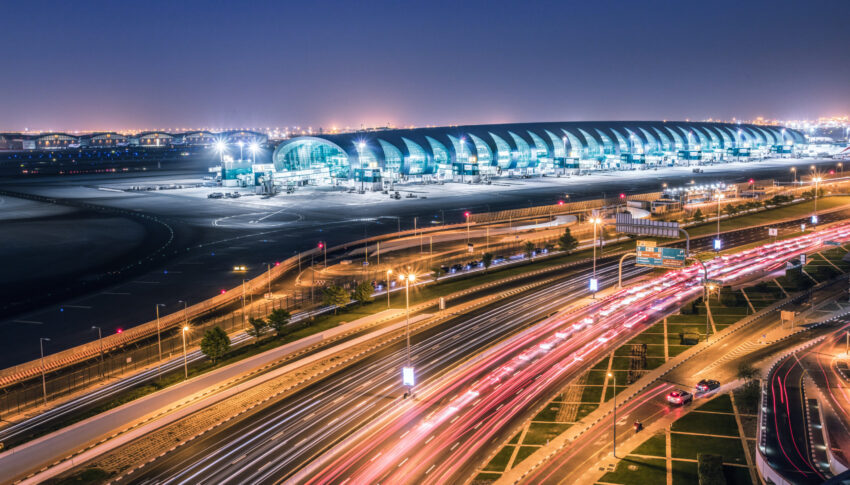2050 is rapidly becoming the focal point year for aviation when it comes to emissions reduction, net zero and carbon neutrality. Airports are also focussed on the task, with trade association ACI, the Airports Council International, confirming its net zero aim by 2050 earlier this year. Airports can pull a variety of the important levers here, whether that is engaging with alternative fuel provision, adding solar farms to land and buildings, promoting renewable-powered ground transportation, increasing public transportation, or other measures.
But it seems that airports in Asia Pacific and the Middle East may need to work harder to achieve the goal, “due in part to its expected traffic growth and the shortfall in the projected abundance of renewable energy,” the association’s Asia-Pacific office, ACIAPAC tells us.
ACIAPAC explains that in developing the appropriate pathways and resources needed to achieve the goal, multiple factors such as local perspectives and contexts, as well as “regionally differentiated assumptions” including airport sizes, were taken into consideration.
So what are Tokyo’s Narita and Singapore’s Changi airports doing to reach that 2050 net zero goal?
Narita’s “Sustainable NRT 2050” plan sets out the direction of initiatives it plans to take up to fiscal year 2050, and builds on its previous “Eco-Airport Vision 2030” plan from April 2016, taking a substantially longer vision. This horizon extension is a key theme within the industry.
Airport operator Narita International Airport Corporation says this is the first time a Japanese airport operator has set a net zero target for its operating company — at the scale of looking at numbers at an airport-wide level, and across its stakeholders.
By using fiscal year 2015 emission levels as the base, the goal under Sustainable NRT 2050 plan is to achieve net zero emissions on a corporate level, reducing airport-wide emissions by 50%. Under the Eco-Airport Vision 2030 plan, Narita aimed to reduce both the operating company and airport-wide emissions by 30% by fiscal year 2030.
But Singapore Changi Airport has gone further than Narita airport for its 2030 target. Operator Changi Airport Group is capping absolute emissions based on 2018 levels in order to achieve its “Zero Carbon Growth to 2030” target. Changi is supporting Singapore’s goal to halve absolute emissions by 2050, and ACI World’s Global Long-term Carbon Goal.
Two other targets include maintaining ACI World’s Airport Carbon Accreditation Level 3 certification, and theISO14001:2015 certification, which specifies requirements for an effective environmental management system.
Digitalisation and digital tools are at the forefront of this work [PDF], whether complex big data and AI or more workaday options like the Excel-based Airport Carbon and Emissions Reporting Tool [PDF] from ACI. Ensuring that both digital and sustainability workstreams are taken forward in a concerted, coordinated way will reap amplified benefits for each.
Looking at the bigger picture across airports, it’s clear that close collaboration and partnerships — particularly with airlines, ground handling providers, electricity or fuel providers, and governments at all levels — will be crucial. As just one example, ACIAPAC says that the decarbonisation of the electricity grid will make a massive change, representing “over 80%” of the total emissions related to the airport.
With ACI flagging sustainable business cases and considerations for the removal of carbon using negative emissions technologies in particular, the association hopes its Sustainable Recovery Best Practice publication will help airport executives to incorporate sustainability in their recovery plans, with best practices and examples included.
Of these, ACI notes new technologies and innovative business models can help airports to address some of the cost and investment challenges faced. Low-emission technologies such as hydrogen-powered infrastructure and vehicles are of course included, and airports should also keep an eye on other emerging carbon removal technologies which are not yet fully commercially available.
But some of the measures are controversial, with offsetting coming in for particular flak. Asked as to why ACI members are not pursuing carbon negative goals, ACIAPAC says that carbon neutrality is meant to reduce emissions “as much as possible” and to compensate the remaining emissions through offsetting, which have come into some question [PDF], but may be unavoidable.
On this, the ACI has the Airport Carbon Accreditation, a global carbon management certification programme for airports, which assesses the efforts of an airport to manage and reduce its carbon emissions through six levels of certification. ACIAPAC explains the programme provides a clear framework for airports to attain carbon neutrality, and that “being carbon neutral is already a step towards going net zero or carbon negative”.
Airports are focused on recovering from the effects of COVID-19. ACIAPAC is clear when it tells us the aviation industry can only return to long-term growth “if it can demonstrate it is doing so sustainably with a real commitment to address climate change”.
As for airport developments, ACI’s own forecast indicates around 44% of the total capital expenditure needed to meet air traffic growth until 2040 are to be allocated to the development of new airports, which must build carbon neutral from the ground up. Such projects offer “tremendous opportunity” for airport operators to place operationally green infrastructure, it adds.
But for governments and airport operators that are still sitting on their hands, ACIAPAC had this to say: “inaction is not an option”.
Author: Firdaus Hashim/Singapore
Published: 9th December 2021



